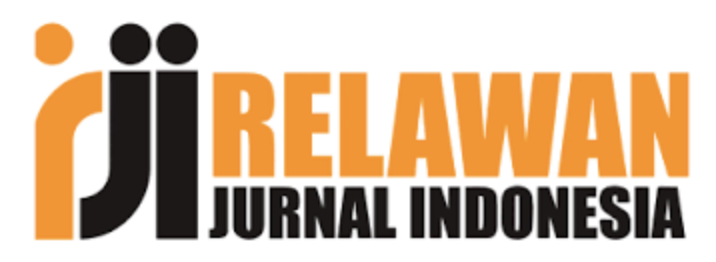PERBANDINGAN METODE MASERASI DAN REFLUKS TERHADAP RENDEMEN EKSTRAK DAUN SELUTUI PUKA (Tabernaemontana macrocarpa Jack)
Keywords:
daun, selutui puka (Tabernaemontana macrocarpa Jack), maserasi, refluks, rendemen, skrining fitokimiaAbstract
Masyarakat suku dayak di Kalimantan Timur secara empiris menggunakan selutui puka pada bagian daun untuk mengobati sakit gigi dan sariawan dengan cara direbus kemudian dikumurkan. Potensi selutui puka sebagai obat tradisional dapat dibuat dalam bentuk ekstrak. Rendemen ekstrak salah satu faktor baiknya suatu metode ekstraksi. Faktor yang mempengaruhi rendemen adalah lama ekstraksi dan akurasi lama waktu yang digunakan berpengaruh terhadap efisiensi proses. Penelitian ini merupakan penelitian eksperimental yang bertujuan untuk mengetahui perbandingan metode maserasi dan refluks terhadap rendemen ekstrak daun selutui puka.
Teknik sampling yang digunakan adalah purposive sampling. Tahapan penelitian dimulai dengan pengumpulan sampel, pengolahan sampel, proses ekstraksi, penetapan rendemen, penetapan kadar air dan skrining fitokimia. Metode ekstraksi yang digunakan adalah metode maserasi dan refluks. Analisis data yang digunakan adalah analisis deskriptif dan disajikan dalam bentuk tabel.
Hasil penelitian menunjukan bahwa metode refluks menghasilkan nilai rata-rata rendemen tertinggi yaitu sebesar 25,76% dan maserasi menghasilkan nilai rata-rata yaitu sebesar 24,37%. Kadar air ekstrak pada maserasi sebesar 14,67 dan pada refluks sebesar 14,83. Ekstrak daun selutui puka mengandung senyawa metabolit sekunder yaitu alkaloid, flavonoid, tanin dan saponin.
Downloads
References
DepKes RI. 1986. Sediaan Gelenik. Jakarta: Departemen Kesehatan Republik Indonesia.
DepKes RI. 1989. Materia Medika Indonesia Jilid V. Jakarta: Departemen Kesehatan Republik Indonesia.
DepKes RI. 1995. Farmakope Indonesia Edisi IV. Jakarta: Departemen Kesehatan Republik Indonesia.
DepKes RI. 2000. Parameter Standar Umum Ekstrak Tumbuhan Obat Cetakan Pertama. Jakarta: Departemen Kesehatan Republik Indonesia.
Harbone J.B. 1987. Metode Fitokimia Penuntun Cara Modern Menganalisis Tumbuhan. Bandung: Institut Teknologi Bandung.
Saifudin A, Rahayu V, Teruna, Hilwan, Yuda. 2011. Standarisasi Bahan Obat Alam. Yogyakarta: Graha Ilmu.
Voight R. 1995. Buku Pelajaran Teknologi Farmasi. Alih Bahasa Drs. Soendari Noerono Soewandhi. Yogyakarta: Universitas Gajah Mada.
Handayani, F, Apriliana, A, Natalia, H. 2019. Karakterisasi dan Skrining Fitokimia Simplisia Daun Selutui Puka (Tabernaemontana macrocarpa Jack). Jurnal Ilmiah Ibnu Sina Ilmu Farmasi dan Kesehatan 4 : 49-58.
Downloads
Published
How to Cite
Issue
Section
Citation Check
License
Authors who publish in Jurnal Farmasi Galenika agree to the following terms:
This license enables reusers to distribute, remix, adapt, and build upon the material in any medium or format, so long as attribution is given to the creator. The license allows for commercial use. CC BY includes the following elements:
BY: credit must be given to the creator.
You are free to:
- Share — copy and redistribute the material in any medium or format for any purpose, even commercially.
- Adapt — remix, transform, and build upon the material for any purpose, even commercially.
- The licensor cannot revoke these freedoms as long as you follow the license terms.
Under the following terms:
- Attribution — You must give appropriate credit , provide a link to the license, and indicate if changes were made . You may do so in any reasonable manner, but not in any way that suggests the licensor endorses you or your use.
- No additional restrictions — You may not apply legal terms or technological measures that legally restrict others from doing anything the license permits.
Notices:
You do not have to comply with the license for elements of the material in the public domain or where your use is permitted by an applicable exception or limitation .
No warranties are given. The license may not give you all of the permissions necessary for your intended use. For example, other rights such as publicity, privacy, or moral rights may limit how you use the material.



1.jpg)







